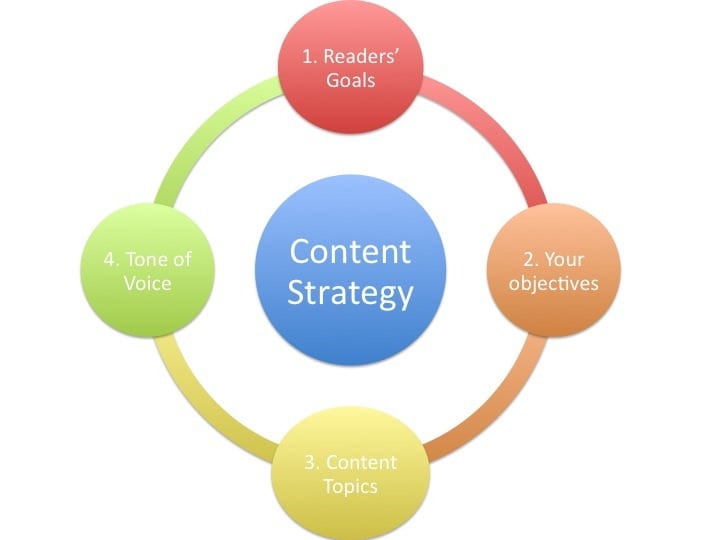Content marketing has been an essential part of digital marketing for years, and it continues to evolve as new technologies and trends emerge. As we head into 2023, it’s important for businesses to stay on top of the latest strategies and tactics for effective content marketing. In this ultimate guide, we will explore the key elements of a successful content marketing strategy in 2023.
- Understand Your Audience
The first step in creating a successful content marketing strategy is to understand your audience. Who are you creating content for? What are their interests, needs, and pain points? By understanding your audience, you can create content that resonates with them and drives engagement.
To understand your audience, start by conducting market research. This can include analyzing your existing customer data, conducting surveys and focus groups, and using tools like Google Analytics to gain insights into your website visitors.
Once you have a clear understanding of your audience, create buyer personas. A buyer persona is a fictional representation of your ideal customer, based on real data and educated guesses about their demographics, behaviors, motivations, and goals.
- Develop a Content Strategy
With a clear understanding of your audience, it’s time to develop a content strategy. Your content strategy should outline the types of content you’ll create, the topics you’ll cover, and the channels you’ll use to distribute your content.
Here are some key elements to consider when developing your content strategy:
- Types of content: Consider the different types of content you’ll create, such as blog posts, videos, social media posts, infographics, and more. Think about which types of content will be most effective in reaching your target audience.
- Topics: Develop a list of topics that are relevant to your target audience and align with your business goals. Consider conducting keyword research to identify the topics that are most likely to drive traffic to your website.
- Channels: Determine which channels you’ll use to distribute your content, such as your website, social media, email marketing, and other channels. Consider the preferences of your target audience when selecting channels.
- Content calendar: Create a content calendar to plan and organize your content. Your content calendar should include the dates you’ll publish each piece of content, as well as the channels you’ll use to distribute it.
- Create High-Quality Content
Once you have a content strategy in place, it’s time to create high-quality content. High-quality content is essential for engaging your audience and driving traffic to your website.
Here are some tips for creating high-quality content:
- Be original: Create content that is unique and stands out from the competition.
- Be informative: Provide value to your audience by creating content that educates, informs, or solves a problem.
- Be engaging: Use storytelling, humor, and other techniques to keep your audience engaged.
- Be visual: Use images, videos, and infographics to make your content more visually appealing.
- Be consistent: Publish content on a regular schedule to keep your audience engaged and build momentum.
- Promote Your Content
Creating high-quality content is only the first step. To get your content in front of your target audience, you need to promote it effectively.
Here are some strategies for promoting your content:
- Social media: Share your content on social media platforms like Facebook, Twitter, and LinkedIn.
- Email marketing: Use email marketing to promote your content to your subscribers.
- Influencer marketing: Partner with influencers in your industry to promote your content to their followers.
- Paid advertising: Use paid advertising on platforms like Google and Facebook to promote your content to a broader audience.
- Measure Your Results
Finally, it’s essential to measure the results of your content marketing efforts. By tracking your performance, you can identify what’s working and what’s not and make adjustments to your strategy accordingly.
Here are three key points to consider when measuring your content marketing results:
- Track Your Key Performance Indicators (KPIs): To measure the success of your content marketing efforts, you need to track the right metrics. Identify your key performance indicators (KPIs), such as website traffic, engagement rates, conversion rates, and sales, and track them regularly. This will help you identify what’s working and what’s not and make adjustments to your content marketing strategy accordingly.
- Use Analytics Tools: To effectively track your KPIs, you need to use analytics tools such as Google Analytics, social media analytics, and email marketing analytics. These tools provide valuable insights into your audience’s behavior and allow you to track your performance over time.
- Continuously Refine Your Strategy: Measuring your content marketing results is not a one-time task. It’s an ongoing process that requires continuous refinement of your content marketing strategy. Use the insights you gain from tracking your KPIs and analytics to refine your strategy and create more effective content that resonates with your target audience.
In conclusion, content marketing remains a crucial element of a successful digital marketing strategy in 2023. To create a successful content marketing strategy, businesses need to understand their audience, develop a content strategy, create high-quality content, promote their content effectively, and measure their results. By following these key steps, businesses can create content that resonates with their target audience, drives traffic to their website, and ultimately helps them achieve their business goals. With the constantly evolving digital landscape, it’s important to stay up-to-date with the latest trends and tactics in content marketing to stay competitive and achieve success in 2023 and beyond.

